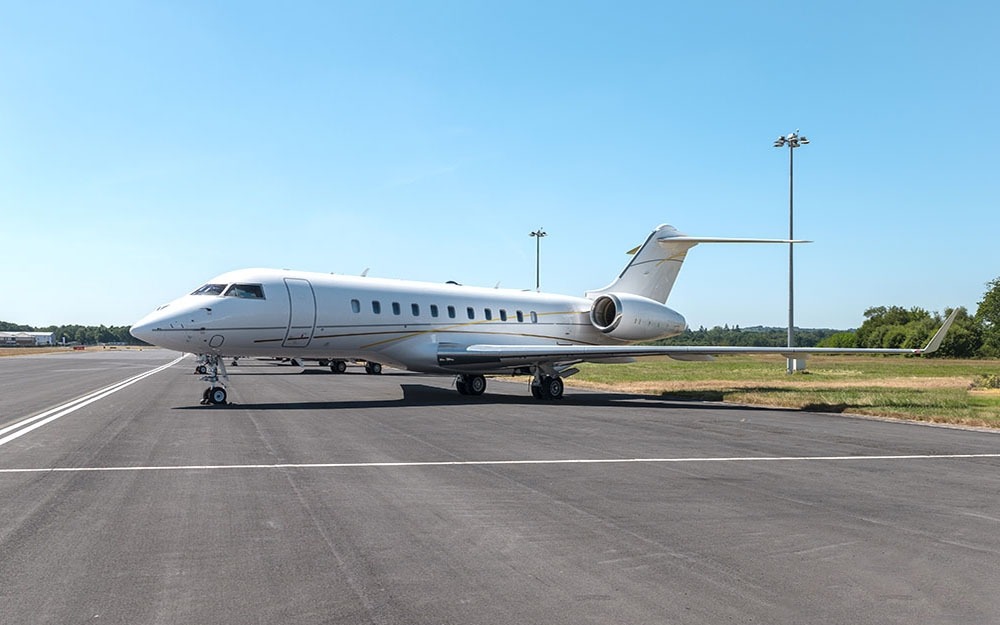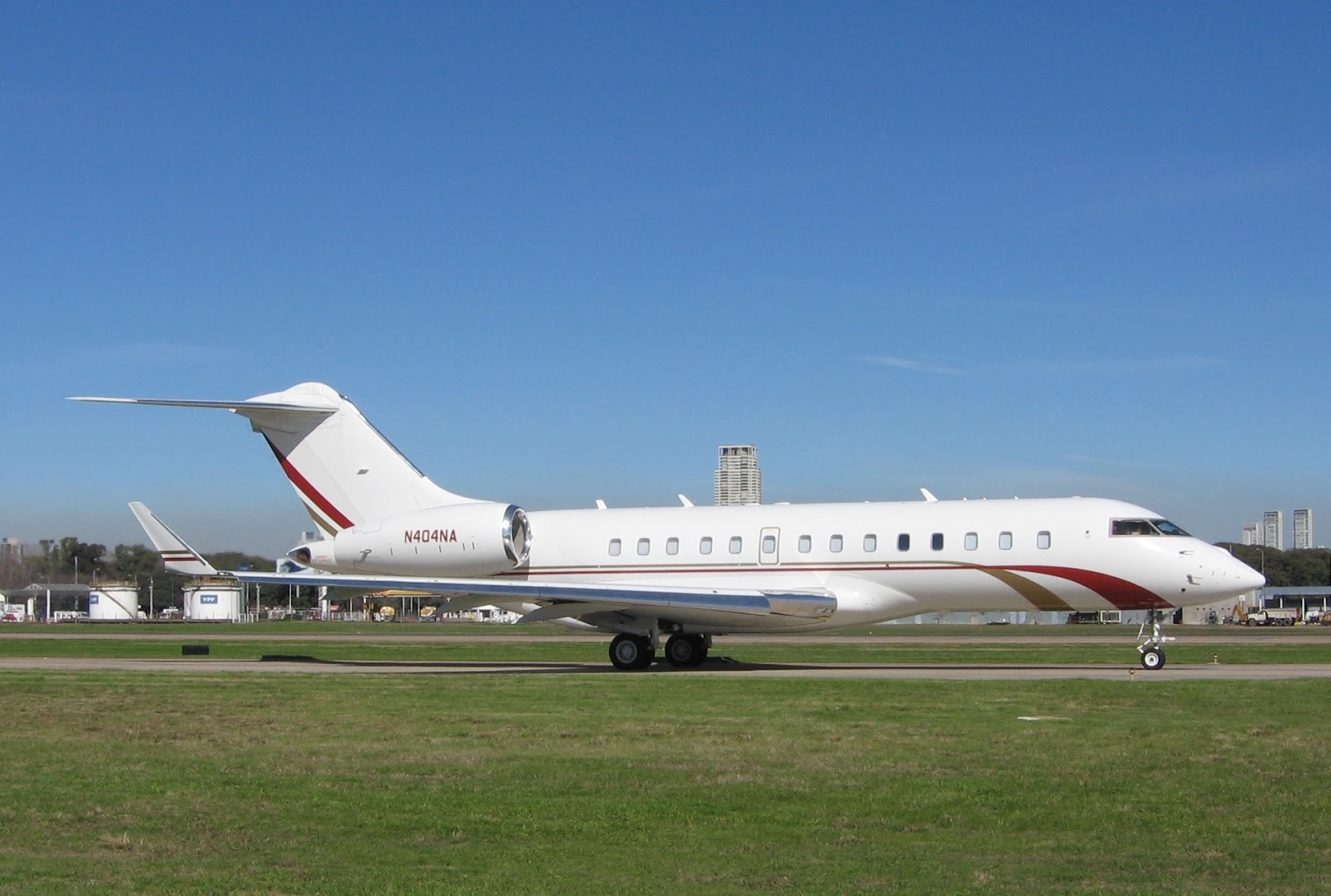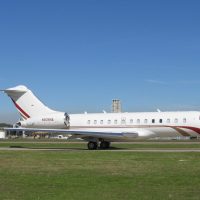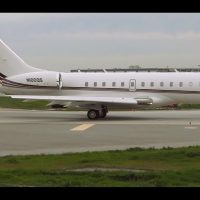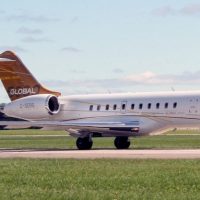Bombardier Global 5000 Specs, Price, Cabin, Cockpit, & Photos. Bombardier Global 5000 is a super large business jet with a variety of 8,889 km (4,800 nm), qualified of flying directly from continental Europe to Central America at high speed. This aircraft has a maximum cruise speed of Mach 0.88 (935km/ h). Bombardier Global 5000’s style is the development of the Global Express corporate business jet that has proven to become highly reliable with a smaller airframe.
Bombardier Aerospace began market evaluation and layout studies for new high-speed long-distance business jets in 1999 and, in February 2002, the Bombardier Global 5000 aircraft was officially launched. Shortly after the announcement of the development program, the TAG Aeronautics company placed the first order for the aircraft.
Bombardier Global 5000 made its maiden flight in March 2003. The Transport Canada (TC) type certification was received in March 2004, the European Joint Aviation Authority (JAA) in July 2004 and the US Federal Aviation Administration (FAA) in October 2004. The aircraft entered service in April 2005, with corporate customers between East. The aircraft adheres to JAR OPS 1,245 ETOPS (remote twin engine operation) 180 minute guidelines for business jets. Greater than 60 Bombardier Global 5000 aircraft have been delivered.
Bombardier Global 5000 Engine
Bombardier Global 5000 has two turbofan Rolls-Royce BR710A2-20 engines mounted on the rear side of the body. The engine, which was ranked 66.1 kN on takeoff, was equipped with full authority digital engine control (FADEC). The two-petal thrust reversing configuration was designed by International Nacelle Systems.
The fuel system has a total ability of 16,329 kg of fuel and includes two integral wing fuel tanks, a central tank and an additional tank mounted on the rear of the fuselage. The fuel management system controls the flow and distribution of fuel. A single refueling point is located on the right wing and fuselage fairing. The aircraft is equipped with Walter Kidde Aerospace fire detection and fire fighting systems.
An additional power unit, RE220GX from Honeywell, is mounted on a tailcone and provides power to power the main engine. Messier-Dowty provides an integrated landing gear system.
Bombardier Global 5000 Specs
In February 2008, Bombardier Aerospace announced that Bombardier Global 5000’s reach had been extended to 741 km to 9,630 km. This has been achieved by increasing the maximum takeoff weight (MTOW) to 41,957 kg, allowing higher fuel capability. Increased array will be standard on all production aircraft starting in 2012.
Takeoff requirements and landing lines allow operators to land on smaller airfields closer to the business area. A balanced field length of only 1.525 m (5,000 feet) is required for a mission with a maximum array of 8,889 km at Mach 0.85.
In June 2005, Bombardier Global 5000 set a new speed record for business jets flying 6,500 km (3,510 nm) nonstop from Chicago to Paris in seven hours 15 minutes. This aircraft has four crew plus a 727kg load (equivalent to eight passengers) and runs at Mach 0.88.
Bombardier Global 5000, which is equipped with the Electro-thermal Ice Protection System (EIPS), conducts several flight tests in ice conditions in Alaska.
Bombardier Global 5000 Cabin
Bombardier Global 5000 cabin is tailored to meet operator requirements and can be configured for up to 19 passengers. The typical cabin configuration, provides a comfortable and productive work environment for up to eight passengers and three crew members, arranged in three parts with crew and staff rest areas, complete offices and conference rooms or state rooms.
The air-conditioned luggage compartment at the rear of the cabin can be accessed during flight. The cabin has been luxuriously finished and provides a very quiet and comfortable flight. Cabin noise level is less than 52dB.
Integrated cabin electronic system Rockwell Collins Airshow 21 provides digital Ethernet-based information distribution for business connectivity. The integrated cabin diagnostic system manages the cabin environment system. Liebherr Aerospace Toulouse supplies air and cabin pressure control systems.
The Global 5000 cabin interior was designed by Bombardier and C & D Aerospace and has new seats with backrests and contoured backs, and as an option, Visco Elastic cushions designed by NASA. The pillow adjusts to the body shape of each passenger when activated by body heat. Goodrich Hella designed light emitting diode (LED) lighting.
Bombardier Global 5000 Cockpit and Avionics
The dark cockpit is ergonomically designed to minimize pilot workload. The Bombardier Global 5000 aircraft is equipped with Honeywell Primus 2000XP avionics with a dual flight management system, a dual Category II autopilot system and an automatic flight control system. The dual electronic flight information system (E/ FIS) has six 8in × 7in multifunction screens. In September 2007, Bombardier announced the new Global Vision flight deck for Bombardier Global 5000 and Global Express aircraft.
The navigation system includes color weather radar, triple laser gyroscope reference system, global positioning system, automatic direction finder, radio ranger system/ integrated omnidirectional VHF landing instrument (VOR/ ILS), distance measuring device (DME), TCAS II traffic collision warning and avoidance systems and close warnings.
Bombardier Global 5000 aircraft are also equipped with Honeywell’s central aircraft information and maintenance system (CAIMS), which provides health, use and service data, enabling faster completion of treatment.
Thales Avionics Canada and CMC Electronics (formerly BAE Systems Canada) have developed the Bombardier enhanced vision system (BEVS) which will be available as an option on Bombardier Global 5000. BEVS, which integrates Thales head-up display 40 ° × 26 ° (HUD) and sensor infrared SureSight CMC, increases pilot situational awareness in low visibility conditions.
The Fusion Rockwell Collins Pro Line avionics range includes: four 15-high diagonal high-resolution liquid crystal display (AMLCD), head-up guidance systems (HGS), personalized display information, electronic checklists, maps with graphical flight planning, air navigation future systems, datalink communication controllers, MultiScan RTA-4100 weather detection systems and synthetic vision systems.
This will also include the Bombardier enhanced vision system (BEVS). Global Vision received certification from Transport Canada (TC) in June 2011. The system will enter service at Global Express XRS with customers launching the London Air Services of Canada in 2012.
Bombardier Global 5000 is equipped with a communication system that includes Rockwell Collins HF and VHF communications with dual radio management, six channel satellite communication systems, Coltech’s five-channel selective calling system and emergency transponder locator. The aircraft is equipped with Honeywell flight data recorders and cockpit voice recorders. Teledyne Magnastar Office-in-the-Sky’s data and voice communication links can be installed.
Bombardier Global 5000 Price and Orders
The price of a Bombardier Global 5000 aircraft is US $ 50 Million. In October 2004, the US FAA ordered Bombardier Global 5000 to become used as an air laboratory for flight testing. The aircraft was sent in October 2005.
Bombardier sent the first Global 5000 in mainland China to Reignwood Group in July 2009. The first Bombardier Global 5000 aircraft was sent in Argentina to unknown customers in June 2010. Qatar Airways ordered two planes in July 2010. The first was sent in December 2010 and the second was scheduled to become sent in 2011. MNJ Jet signed an agreement for one Bombardier Global 5000 in September 2010.
In November 2010, Niki Lauda Formula One champion NL Holding ordered one Bombardier Global 5000 aircraft with the new Global Vision flight deck. The aircraft is scheduled to become delivered in 2012. 100 Bombardier 5000 began operations with US-based Heritage Aviation in March 2011.
Bombardier sent the first of the four 5000 Global jets to the German Ministry of Defense Special Mission Wing (September) in September 2011. This aircraft will be used for VIP transportation and medical evacuation operations (MedEvac).
